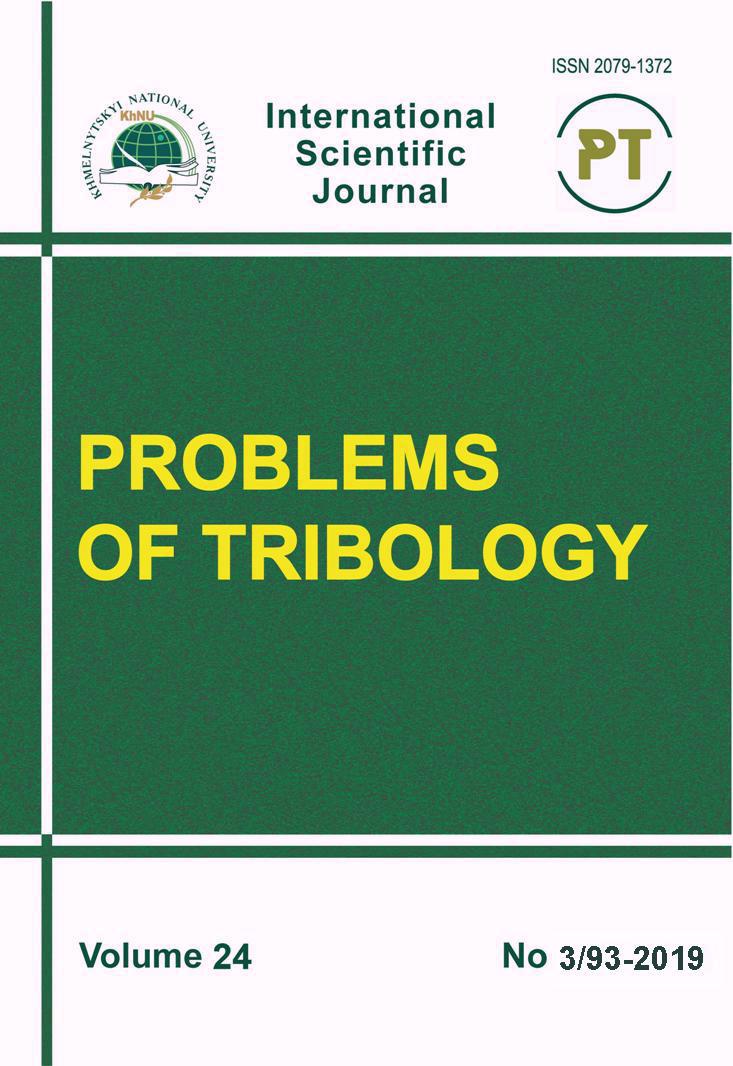Estimation of the Stress-Strain State of a Discrete Medium by a Plastic Flow Model
DOI:
https://doi.org/10.31891/2079-1372-2019-93-3-29-38Keywords:
discrete environment; internal coulomb friction; dilatation.Abstract
The article considers the possibility of using the apparatus of the plastic flow theory to evaluate the stress-strain state of a medium filled with discrete material. The ratio of the rheological model associated with the Coulomb condition is formulated, which takes into account the characteristic features of the deformation of discrete materials: the effect of dry coulomb friction and the manifestation of dilatation.
The ratios which describe the boundary condition of the plastic medium, both under the conditions of Saint-Venant and Mohr – Coulomb, are given. In the solid-state plastic flow model, the Saint-Venant condition is used as a potential function. Therefore, it is logical to consider the use of the Mohr – Coulomb condition as a potential function in the plastic flow model of a bulk medium. This is done in the Drucker – Prager model. The authors analyzed the validity of the findings of this model with respect to the discrete environment.
The ratio for the analysis of the reasons for the discrepancy between the conclusions of the Drucker – Prager model and the results of experiments with discrete materials is given. The comparison of the magnitude of the dilatation coefficient with the condition of coincidence of the stress and deformed state in the limiting stage of deformation of the discrete medium, suggests that the Drucker – Prager model which is associated with the Coulomb condition doubles the value of this coefficient. The ratio of the Drucker – Prager model is related to the stresses acting on non-orthogonal planes of the boundary equilibrium, with deformations along the orthogonal planes of maximum displacement. This leads to a discrepancy between the predicted model and the experimentally determined values of the dilatation coefficient, as well as the impossibility to reconcile the fields of the slip lines in the stress and deformation plane.
The authors conclude that the highlighted differences between the theoretical conclusions and the results of experimental checks can be eliminated by presenting the relations of the model of the plastic flow of the discrete medium through the stresses and deformations that arise in the twisted conjugate sliding planes.
References
2. Sedov L. I. Mehanika sploshnoy sredyi / L. I. Sedov. – M. : Nauka, 1970. – T. 2 – 578 s.
3. Kovtun V.V. Yssledovanye prochnosty sypuchykh materyalov v uslovyiakh ploskoi deformatsyy / V.V. Kovtun, E.V. Bahryi, V.T. Buhaev // Budivelni konstruktsii. – 2004. – Vyp. 61. – t. 1. – S. 109–116.
4. Sokolovskiy V.V. Statika syipuchey sredyi / V.V. Sokolovskiy. – M. : Nauka, 1960. – 272 s.
5. Drucker D.C. Solid Mechanics and Plastic Analysis of Limit Design / D.C. Drucker, W. Prager. // Quarterly of Applied Mathematics. – 1952. – Vol. 10. – №2. – P. 157-165.
6. Kovtun .V. Napruzhennia po potentsialnykh ploshchynkakh kovzannia u sypkomu seredovyshchi / V.V. Kovtun // Visnyk KhNU. – Tekhnichni nauky. – 2010. – № 1. – S. 7–12.
7. Kovtun V.V. Deformatsii vzdovzh potentsialnykh linii kovzannia u sypkomu seredovyshchi / V.V. Kovtun, O.A. Dorofieiev. // Visnyk Khmelnytskoho natsionalnoho universytetu. Tekhnichni nauky. – 2010. – №5. – S. 142–150.
8. Golushkevich S.S. Statika predelnyih sostoyaniy gruntovyih mass / S.S. Golushkevich. – M. : Gostehizdat, 1958. – 288 s.
9. Yakovlev P.I. Predelnoe sostoyanie po S.S. Golushkevichu i tehnicheskaya teoriya predelnogo napryazhennogo sostoyaniya gruntovoy sredyi / P.I. Yakovlev. – Odessa : Astroprint, 2008. – 230 s.






